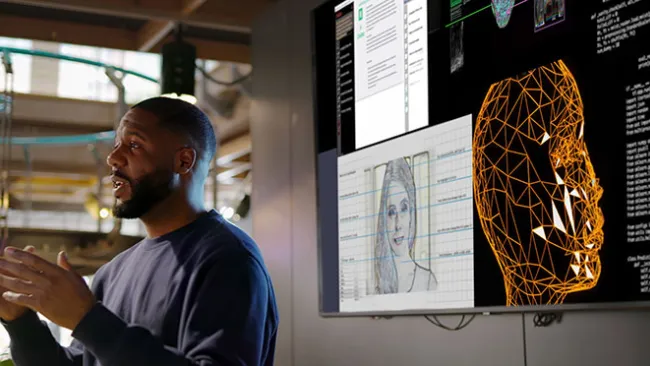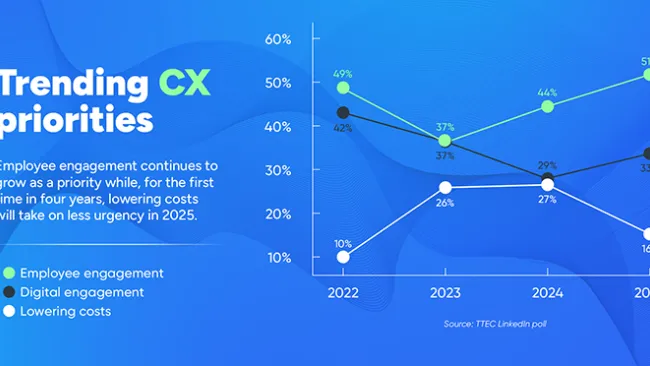In a world where many products and services are now seen as commodities able to be purchased anywhere, from anyone, and only when needed, many organizations are struggling to find and retain customers. So, when your product is no longer the unique competitive differentiator, what's left is the relationship. As standard services and functionalities become similar, you must foster the emotions about and within your company.
Progressive businesses need to consider not only the relationship with its consumers, but its employees as well. And to build this lasting relationship, you need to know how to listen and when (and how) to act.
Rethink your customer relationship
Thomas G. Stemberg, the co-founder of the office mega-store Staples, once said, "Forget branding and positioning. Once you understand customer behavior, everything else falls into place." While on the right track, analysis without action is just an academic exercise and many organizations are not good at either.
And while every organization strives to deliver excellence, so do all its competitors. Successful companies need to focus on a unique resource, its relationship with its customers. By understanding and servicing the emotional needs of the customer, you are more likely to develop a rapport. And customers will pay more for the same product if they think you are more likely to meet their emotional and functional needs. Also, customers who have great experiences will remember them long after they have forgotten the price they paid.
It's not about what your organization does, it’s about how it's perceived. That's what you know defines a great customer experience, not that it was slick or fast or really efficient. Several companies are waking up to this. They're looking for new ways to listen to customers and then engage in a meaningful dialogue.
In its 2017 “Customer Service Barometer” survey, American Express found that over two-thirds of customers believe that a pleasant customer experience is highly important to how it conducts service. Essentially, don’t think of your customers as simply transactions, but as valued human beings who define the brand just as much as the product.
Overall, it’s about how the customer feels about what you do, as excellent products, great service and minimal effort all become a part of the 'new normal' expected from you and your competition. As the old proverb goes, “beauty is in the eye of the beholder.” Think of any Apple store you visit. On those white walls you see “you”, the brand is not just showcasing its product but the people that make the service memorable. Apple’s customers are essential to making Apple special, and it lets you know that.
More than an employee
While plenty of organizations are listening to the customer, fewer are paying as much attention to the people they expect to deliver those experiences, its employees. Echoing the wisdom of the innovator Timothy R. Clark, “Highly engaged employees make the customer experience. Disengaged employees break it.” In 2016, a report by The Institute of Customer Service, stated that only a quarter of U.K. employees are actively engaged in their work, this leads to terrible repercussions on service quality.
In fact, 43 percent of customers said they would warn others not to shop at a company that has a bad employee experience. Everyone has experienced a potentially great experience let down by a disengaged, dispirited employee, they don't want to be there and soon, neither do you.
But more importantly employees are people too, and they might even be your customers. So, is the problem with the employee or with the company? The individual or the culture? The challenges organizations face in understanding customers are just as true with employees.
Listening to the emotional tempo of your organization requires tools that are not widely gamed, such as those linked to compensation or promotion. Instead, look at the informal channels of electronic communication; the chat boards, knowledge management systems, and proactive ‘open’ discussion forums. You need to instead listen to the authentic voice of the employee, what they say when they think you're not listening. This allows you to gain a fresh perspective.
Revisiting CRM
When both customers and employees are engaged and start asking “what can I give?” as often as “what can I get?,” amazing things start to happen. Relationships form that transcend price or convenience, mere satisfaction becomes something deeper and longer-lasting (and profitable).
"You must earn the right to continued relationships with customers,” said renowned customer-centric author, Jeanne Bliss. And she's right but when we are really, truly in a relationship, we are prepared to overlook little issues and forgive mistakes. Customers stay loyal despite your flaws and employees go above-and-beyond to promote your brand and values.
There needs to be a re-commitment to the 'relationship' in customer relationship management (CRM), you need to not just 'know' your customer, you need to understand them. Then you need to turn that analysis inward and think about employees in the same way. Both are people who have a choice whether to be loyal to you or not, whether to 'pay' extra or just the bare minimum.
An authentic narrative should tie into both the customer and employee experience. Use the same tools, such as the ones we use at TTEC, to listen to the ‘Voice of the Employee’ just as you would listen to the ‘Voice of the Customer.’ The new tools of emotional analytics are based in stories, but they must extend beyond individual moments in time to encompass complex, fast-moving landscapes of experience.
If engaging customers through great experiences is the new competitive battle ground, then great employee experience is the heart of a great customer experience. Thinking about customer experience without considering employee experience puts you in danger of overlooking a valuable resource or a potential source of future trouble. Since the days of Business Process Reengineering, we have known that true change requires paying attention to processes, technologies and people. It’s too tempting to think about customer experience solely as a function of the technologies or processes (the mechanics of Customer Experience) when these are the easiest things for your competitors to replicate.
Time to rethink feelings
Remember, when it comes to gauging real emotions, standard practices like surveys don’t work. The process is often riddled with biases and misleading results. Emotions are fleeting, and organizations need a better way to understand how people truly feel. The real trick is to make each relationship unique and to deal with it at scale. So, the first thing we do is use these unique stories to understand the emotions and how they're developing over time. Which then gives you actionable insights on how to handle critical points. If you are operating in a commoditized sector, with competitors everywhere, where customers who defect the moment a slightly better offer comes along, consider the role of emotions in your business.
The Role of Emotions in Customer and Employee Experience


















